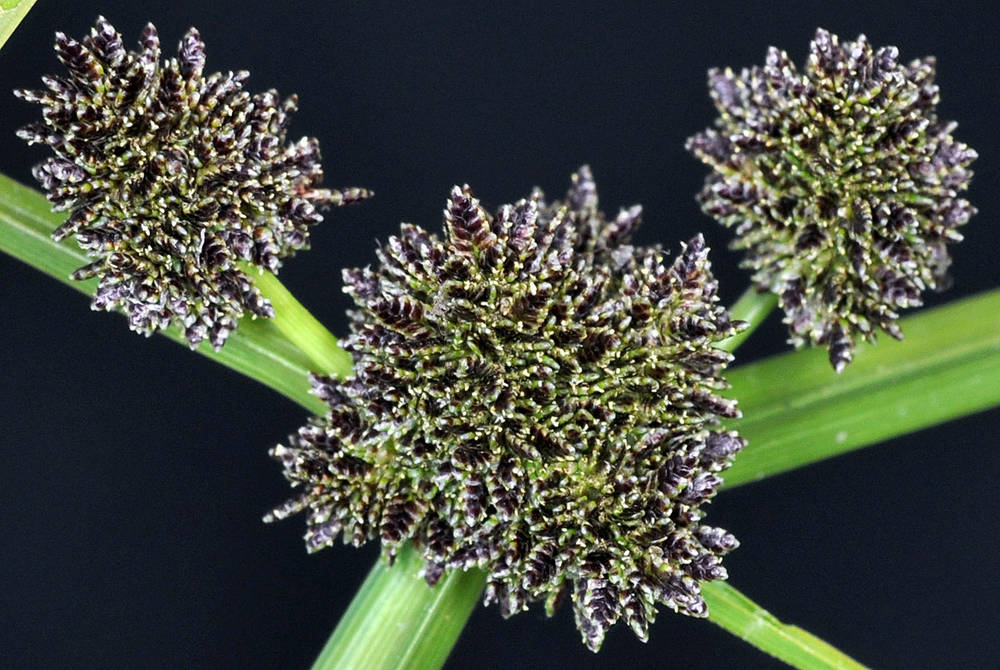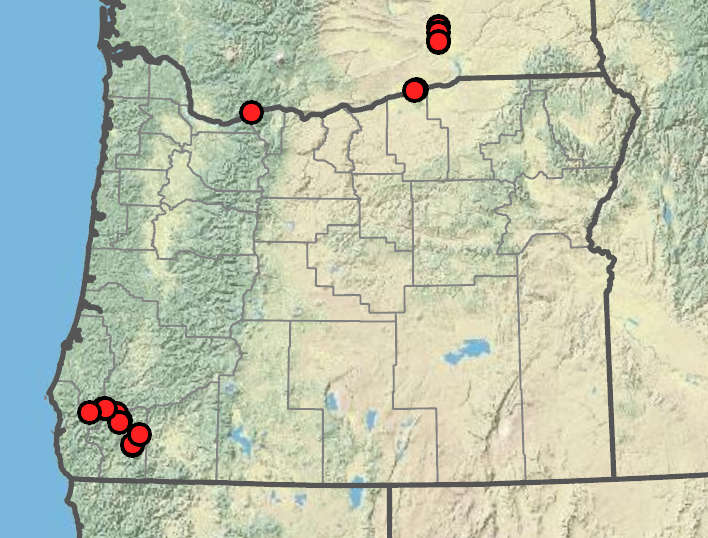Cyperus difformis
Cyperus acuminatus
Asian flatsedge
sharp-pointed flatsedge, short flatsedge
1–15, trigonous, 7–30 cm × 1.2–2.5 mm; soft (flattened in pressing).
roundly trigonous; (10)20–30(45) cm × 0.4–1.2 mm.
(2)7–22 cm × 2.2–4 mm.
8–12(16) cm × 1–2(4) mm.
clusters head-like; dense, 7–17(35) mm wide;
rays (0)1–5, 2–32 mm; longest inflorescence bract erect or nearly so, appearing as continuation of culm; other bracts horizontal to ascending.
clusters head-like, hemispheric, 7–12(15) mm wide;
rays 1–3(5), 0.5–2 cm long; longest inflorescence bracts erect to ascending.
30–120, oblong-ellipsoid, compressed; (2)3–5(6) × 0.8–1.2 mm; greenish brown to purplish brown; floral scales (6)12–20(30), obovate to orbiculate, 0.6–0.8 × 0.6–0.8 mm, stramineous to deep purple with clear margins; mid-stripe greenish, stramineous, or purplish;
lateral ribs 0; medial ribs 3;
apex mucronulate.
(15)25–50(75); ovoid, compressed, 4–7 × 2–3 mm; floral scales 8–20(35); ovate-lanceolate, 1–2 × 1–1.4 mm; yellowish; yellowish green, or light reddish brown, with light brown or greenish brown mid-stripe, 2-keeled, subtly 1-ribbed;
apex acute, mucronate; straight to curved outward, glabrous or sparsely scabridulous.
anthers 0.1 mm;
styles 0.1 mm;
stigmas 0.1–0.3 mm.
anthers 0.5 mm;
styles 0.8–1.1 mm;
stigmas 0.5 mm.
obovoid-ellipsoid, 0.6–0.8 × 0.3–0.4 mm (as long as subtending scale);
base cuneate.
broadly ellipsoid, abruptly contracted to base, 0.8–1.1 × 0.3–0.4 mm long;
stipe 0.1 mm long.
Cyperus difformis
Cyperus acuminatus
Disturbed, sandy or muddy soils, sand bars, roadsides, sometimes on serpentine. 100–400 m. Sisk. CA, ID; east to NJ, south to Mexico; South America; Africa, Australia, Eurasia, islands of the Pacific and Indian Oceans; Exotic.
Cyperus difformis is recognized by its tight heads of small spikes with unusually small scales. The first Oregon collection was made in 2004.
Disturbed seasonal wetlands, usually in sandy soils. 0–500 m. Sisk, WV. CA, WA; east to NH, south to Mexico. Native.
Cyperus acuminatus is most often confused with C. squarrosus, which has longer, more outcurved awns and more veins on the floral scales.
Barbara Wilson, Richard Brainerd, Nick Otting
Barbara Wilson, Richard Brainerd, Nick Otting
- Local floras:
BC,
CA,
OR,
WA
- Local Web sites:
CalFlora,
CalPhotos,
Flora NW,
PNW Herbaria
WildflowerSearch
iNaturalist (observations)
USDA Plants Database
- LBJ Wildflower Center
- SEINet
- Plants of the World Online
- Encyclopedia of Life
- Wikipedia
- Google Image Search




